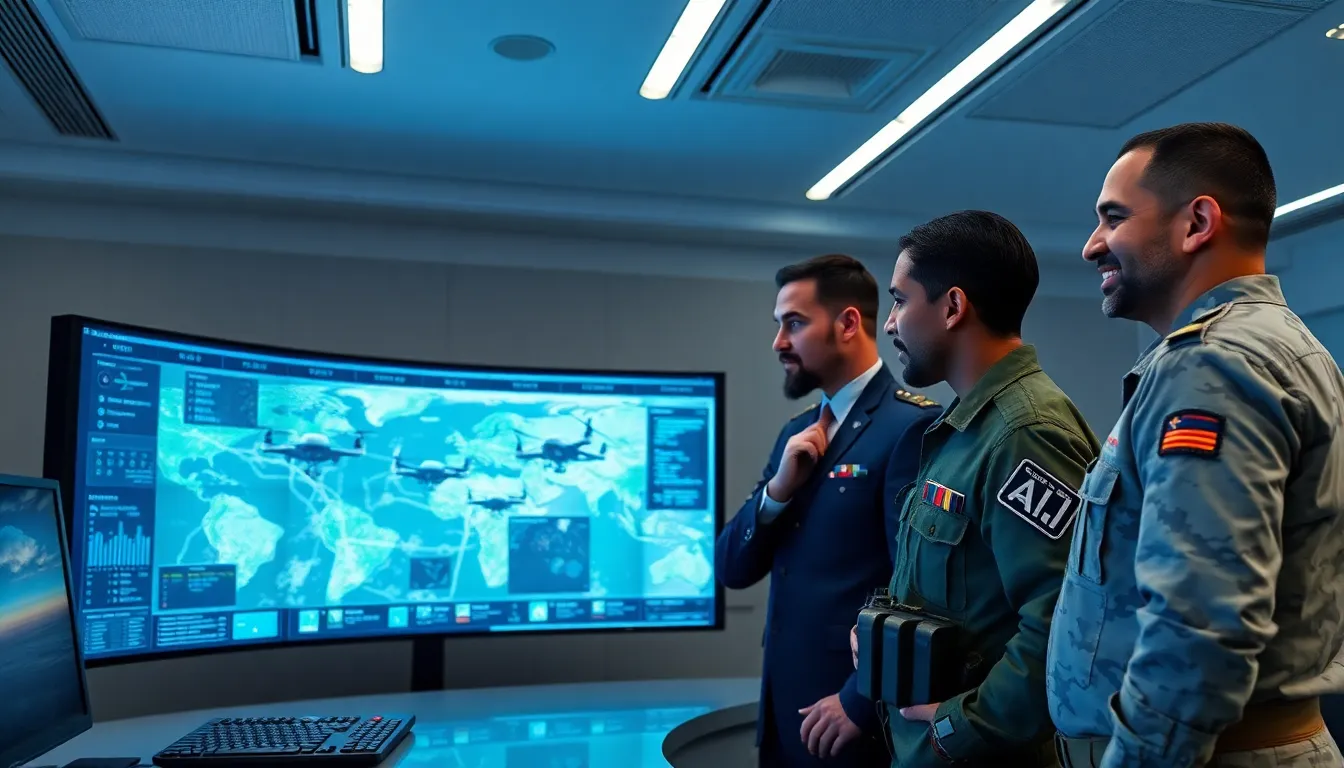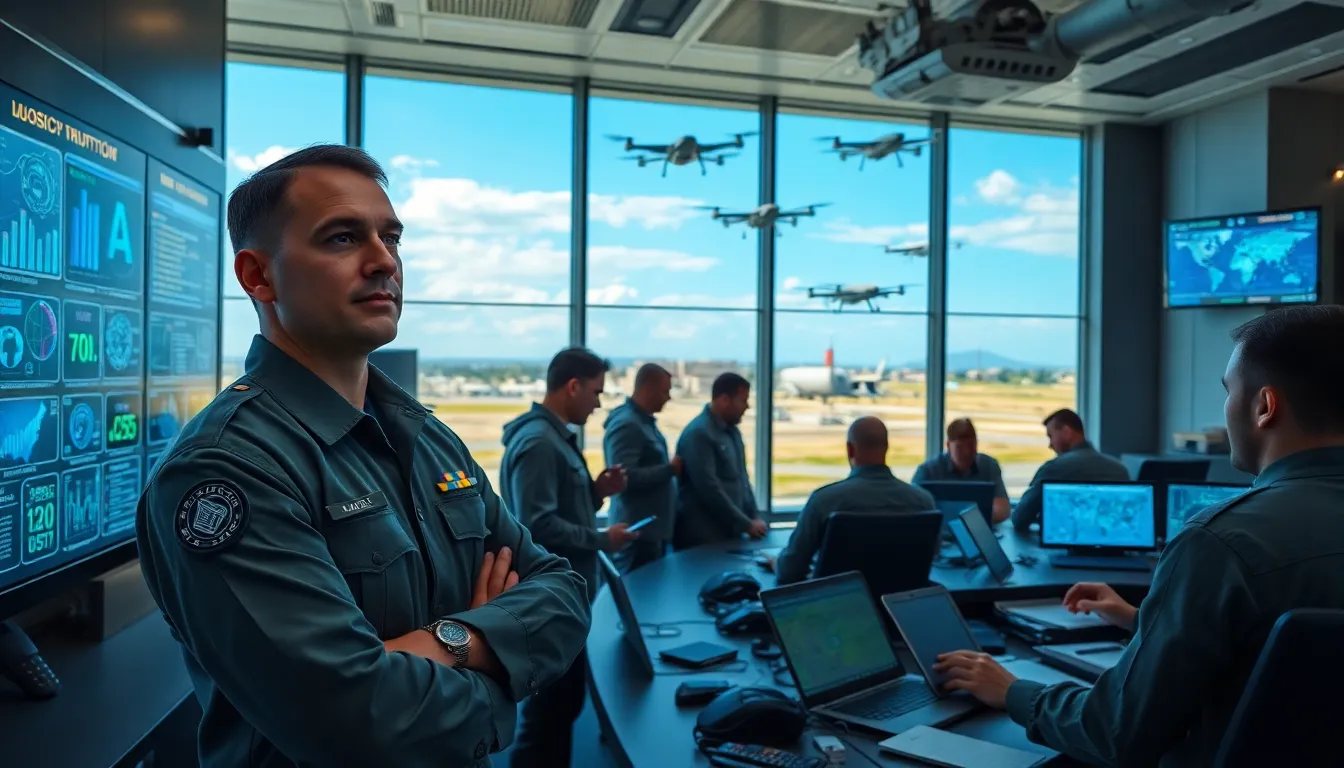Welcome to the age of heightened technological warfare, where the Internet of Military Things (IoMT) is taking center stage. Just when you thought the military couldn’t get any cooler, here comes a revolution that combines wires, sensors, and a dash of AI magic. Imagine a battlefield where everything talks to everything, from drones delivering snacks to soldiers of the future to tanks giving status updates like an overzealous social media influencer. While we might chuckle at the image, the truth is that IoMT could redefine how wars are fought for generations to come. So, let’s immerse and explore this intriguing intersection of technology and combat that promises to make military operations not just more efficient, but perhaps a bit more spy-movie thrilling.
Table of Contents
ToggleUnderstanding The Internet Of Military Things (IoMT)

The Internet of Military Things (IoMT) refers to a network of interconnected devices and systems that enhance the capabilities of armed forces worldwide. By integrating Internet of Things (IoT) technology, military operations can leverage real-time data for decision-making, situational awareness, and operational efficiency. In essence, IoMT serves as the nervous system of modern militaries, enabling a holistic view of the battlefield and improving communication across units.
Think of it this way: just like a well-oiled machine, when all components work in harmony, the results can be extraordinarily powerful. From command centers equipped with advanced analytics to drones scouting enemy territory, IoMT covers a diverse range of technologies, allowing for seamless interactions between devices. In this landscape, each device, whether it’s a ground robot or a weapon system, sends and receives data, enabling unprecedented coordination and strategy.
Key Components Of IoMT
Several foundational components make up the Internet of Military Things, each playing a vital role in enhancing military effectiveness:
Sensors and Devices
At the heart of IoMT are sensors that gather crucial data. These can be anything from temperature and location sensors to complex image capture devices that feed back to command centers. Armed forces can use such real-time intelligence to adjust strategies instantaneously.
Cloud Computing
With vast amounts of data generated, cloud computing stands out as a critical enabler. It allows military personnel to store and analyze data in real-time, ensuring that essential information is just a click away whenever it’s needed most.
Artificial Intelligence (AI)
AI processes the mountains of data collected, generating actionable insights more rapidly than any human can. From predictive analytics for future threats to autonomous systems making decisions on the fly, AI is vital for modern military operations.
Communication Networks
Robust communication networks tie everything together. Whether via satellite, secure internet, or battlefield networks, reliable communication ensures that all units are in sync, making coordinated attacks and responses feasible.
Applications And Benefits Of IoMT
The applications of the Internet of Military Things are as varied as they are impressive:
Enhanced Situational Awareness
In the chaos of battle, knowledge is power. IoMT enables soldiers to access real-time information about enemy positions, weather conditions, and resource availability. This advantage can be the difference between victory and defeat.
Streamlined Supply Chains
Imagine a system where military supplies, from ammunition to food, are tracked in real time. IoMT optimizes logistics by predicting what supplies are needed where and when, significantly reducing downtime and improving operational readiness.
Increased Operational Efficiency
With AI-driven analytics, military leaders can make quicker, more informed decisions based on the real-time data flowing from the battlefield. This efficiency translates into better resource management and faster mission execution.
Autonomous Operations
Drones, autonomous vehicles, and robotics can perform high-risk missions without putting human lives on the line. IoMT empowers these unmanned systems to operate efficiently in hostile environments, from surveillance to attack missions.
Challenges And Limitations Of IoMT
While the promise of IoMT is vast, significant challenges persist:
Security Risks
Like anything else connected to the internet, IoMT systems are vulnerable to cyber-attacks. A breach could compromise sensitive data, making military operations less effective or jeopardizing personnel safety.
Integration of Legacy Systems
Many military organizations still rely on older technologies. Integrating IoMT with these legacy systems can be complicated and labor-intensive, often slowing down the adoption of new technologies.
Cost Implications
Implementing IoMT solutions isn’t cheap. The initial investment in devices, infrastructure, and training can be a barrier for some institutions, particularly smaller military forces.
Data Overload
With great amounts of data come great challenges in sifting through that information for actionable insights. Military leaders must ensure they have the tools and personnel to effectively leverage the data collected.
Future Trends In The Internet Of Military Things
As we look ahead, the future of the Internet of Military Things appears bright but complex:
Improved AI Capabilities
With advancements in machine learning and data analytics, future generations of IoMT will have even more powerful AI capabilities. These improvements will enhance predictive analytics and operational decision-making.
Cybersecurity Innovations
In response to the growing cyber threat, innovations in cybersecurity will likely emerge, creating more resilient IoMT systems capable of protecting sensitive data without sacrificing functionality.
Greater Autonomy
The trend toward autonomous systems will continue. Future IoMT platforms may see unmanned vehicles taking on more critical responsibilities, reshaping how ground, air, and sea operations are conducted.
Enhanced Interoperability
As the military landscape evolves, collaboration between partner nations will be crucial. New IoMT frameworks will focus on interoperability across different countries’ systems, ensuring united efforts in international operations.



